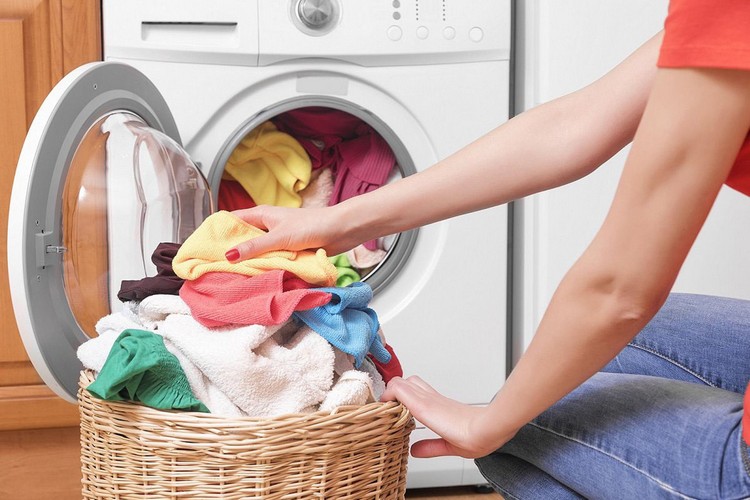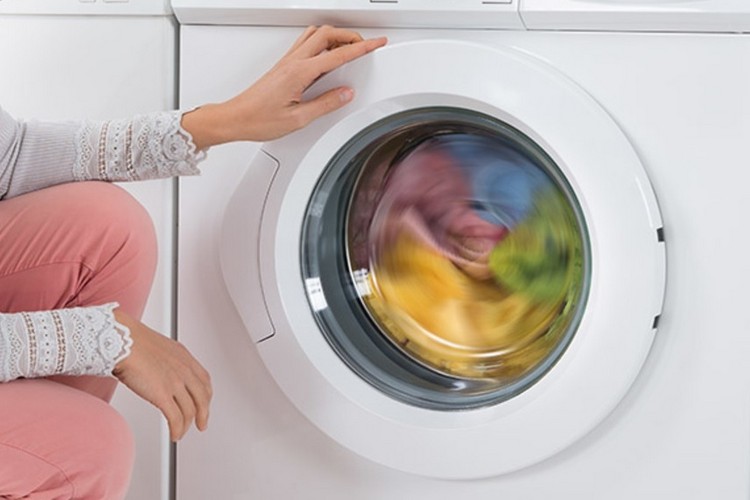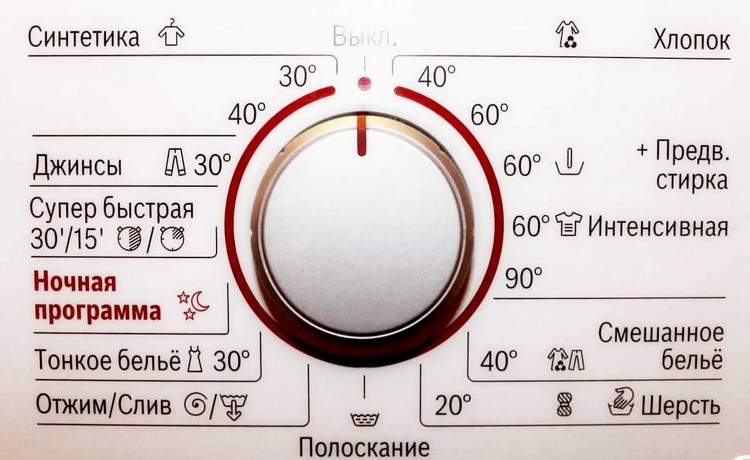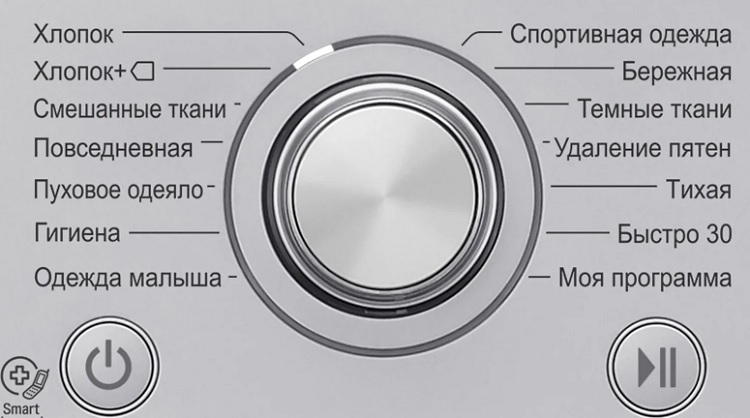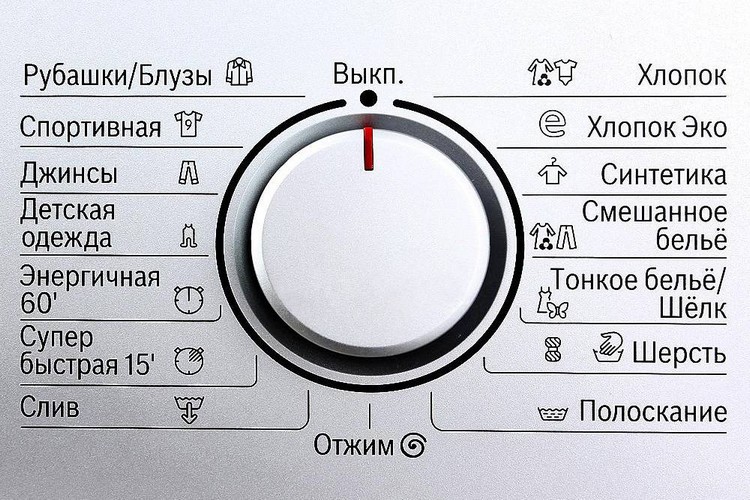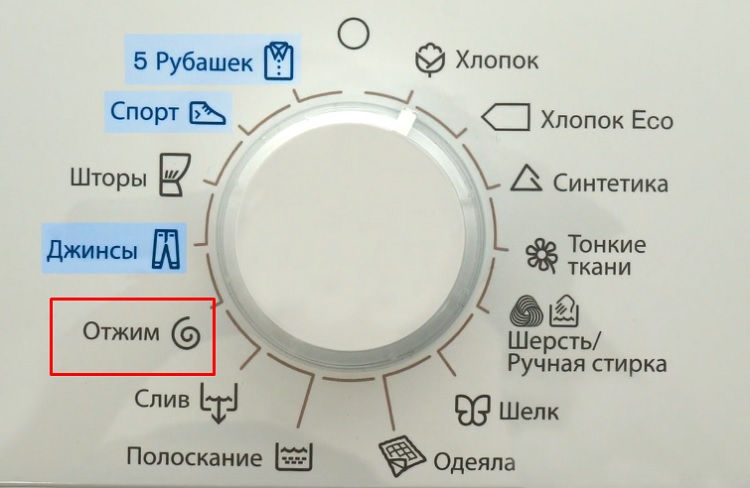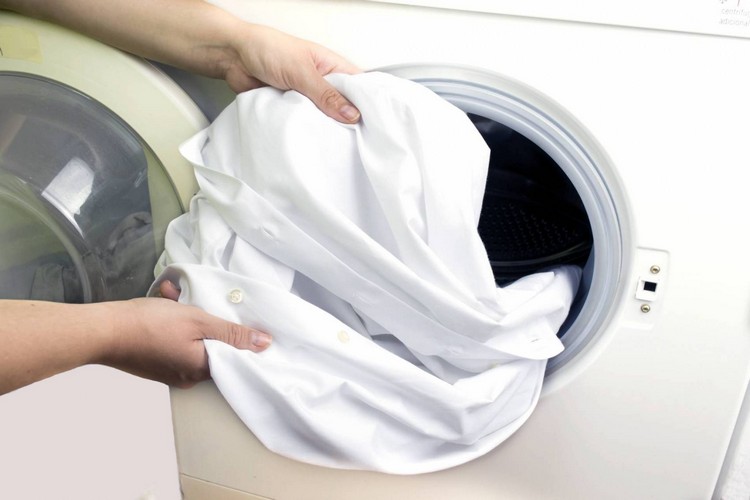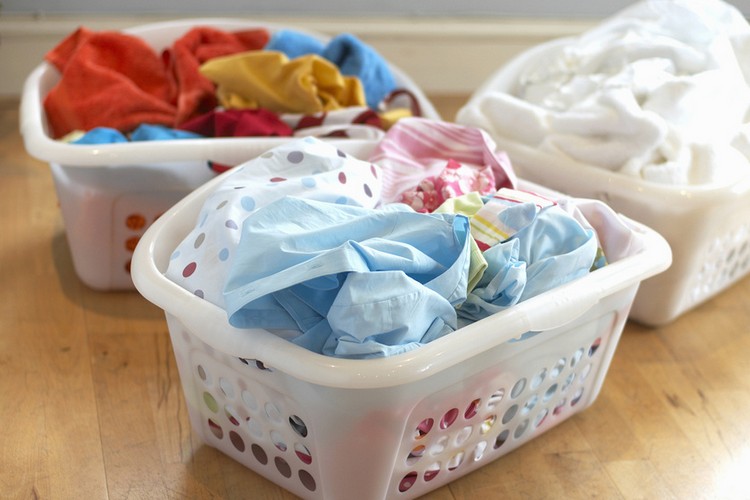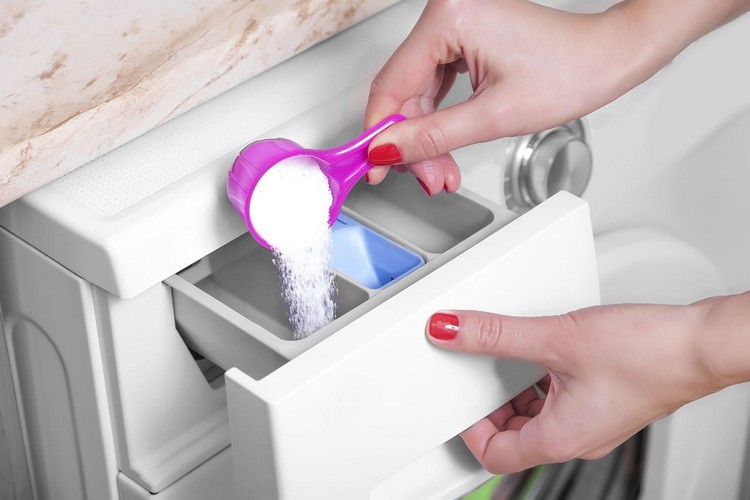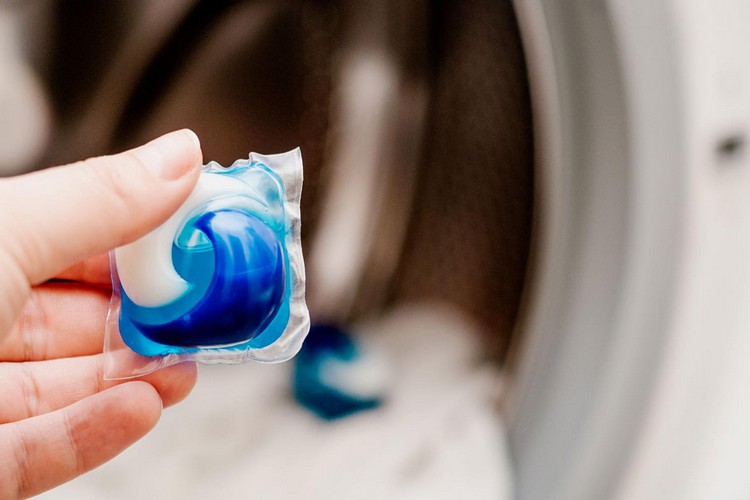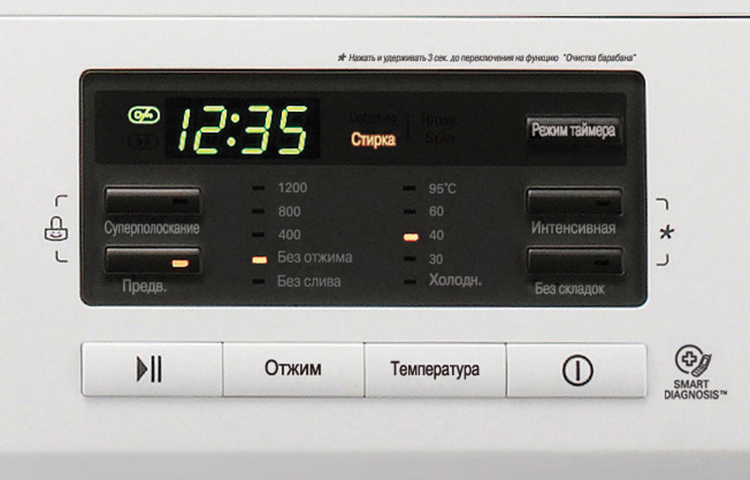How to use a washing machine - detailed instructions for choosing a program for various popular manufacturers
 A washing machine is an indispensable attribute of the life of a modern person.
A washing machine is an indispensable attribute of the life of a modern person.
With the help of this device, you can wash things in the shortest possible time. It saves time and money, allows you to choose the desired washing mode. Thanks to the washing machine, you will always be in neat, good-smelling things.
However, not everyone knows how to properly operate the device. Many overload, do not clean, or even clog it. This leads to frequent breakdowns.
Let's look at the rules for using a washing machine to prevent defects.
Content [Show]
Instruction before use
Each manufacturer assumes certain rules for the use of their products.
Many do not read the instructions, preferring to study the device on their own, but this is a fatal mistake. Sometimes improper use of the device seriously shortens the life of the device.
Basic rules generalized for all companies:
- Do not overload the device by putting the recommended number of things in the machine.
- Clean the product regularly to avoid scale deposits.
- Perform regular inspection and repair of broken parts.
- Do not exceed the service life of the product, do not neglect safety precautions.
Instructions are needed in order to:
- Find information that is not publicly available on the web.
- Learn to see the advantages and disadvantages of the product.
- Learn how to properly use a washing machine.
- Learn safety precautions while interacting with the device.
That is why do not neglect the study of the instructions attached to the product you just bought. Sometimes reading the operating instructions extends the functionality of a front-loading or top-loading machine for a long time.
Which mode to choose
As already mentioned, each machine has its own characteristics. Modes may vary depending on the manufacturer and year of manufacture.
However, there are several basic modes that are included in the functionality of any washing machine:
- Daily laundry.
- Intensive wash.
- Preliminary.
- Manual.
- Night.
- Soaking (push-up).
- Cotton and linen.
Daily laundry
The main feature of washing is the half-empty drum.
Washing for every day is used for clothes that have not had time to get very dirty. Reduces washing time. The water temperature is no more than 30 degrees Celsius.Duration - up to 50 minutes.
On this mode, work clothes of any color are washed.
Prewash
It is chosen for very soiled clothes.
The washing process consists in a small heating of water and a small number of revolutions.
Detergent (be it powder or capsules) is poured into two compartments. The first is applied in the first cycle, the second - after draining the water.
Intensive wash
It is applied to too polluted things.
In this case, the water temperature reaches 95 degrees Celsius. Delicate fabrics should not be washed in this mode.
Handwash
Used for thin materials. Look at the label: if you find an icon in the form of a hand in a basin on it, then the item must be hand washed.
In this case, the drum rotates as slowly as possible, and the temperature does not exceed 40 degrees Celsius.
Night wash
The operation of the mode includes the most quiet operation.
There is no spin in this option, since among the other functions of the machine it is the most noisy. Also, there is no signal for the end of the wash.
Soak
This process prepares the clothes for washing.
The water temperature is no more than 30 degrees Celsius.
Cotton and linen
These materials require a special approach. There are several temperature criteria: 30, 40, 60 and 90 degrees.
It all depends on the quality of the thing: the degree of contamination, the means used, etc. A high temperature helps to remove stubborn stains and grease, and at low temperatures, less dirty clothes should be washed.
Programs from different manufacturers
Each company has its own characteristics.
It is necessary to consider the programs of each company separately:
LG (Lji)
- Cotton.
- Synthetics.
- Quick cotton.
- 30 degrees.
- Delicate.
- Wool.
- Down duvets.
- Baby clothes.
- Steam cleaning.
- Silent operation.
Indesit (Indesit)
- Cotton.
- Delicate wash.
- Synthetics.
- Silk.
- Intensive wash.
- Prewash.
- Jeans.
- Silent operation.
Zanussi (Zanussi)
- Wool.
- Cotton.
- Synthetics.
- Delicate.
- Stain removal.
Candy
- Rinsing.
- Start delay.
- Intensive.
- Quick wash.
- For durable fabrics.
- Super wash button.
- Extra rinse.
Electrolux (Electrolux)
- Main wash.
- Rinsing.
- Spin.
- Wash delay.
- Drain.
- End of cycle.
- Rinse stop.
Whirlpool (Whirlpool)
- Wool.
- Delicate wash.
- Quick wash.
- Daily laundry.
- Cotton.
- Synthetics.
- Drum balancing option.
Beko (Beko)
- Cotton.
- Eco-friendly cotton.
- Dark materials.
- Shirts.
- Mini wash.
- Mix 40.
- Baby clothes.
- Handwash.
- Wool.
- Fluff.
- Saving.
- Self-cleaning function.
Bosch (Bosch)
- Easy ironing.
- Jeans.
- 40-60 degrees.
- Sportswear.
- Silk.
- Mixed clothes.
- Synthetics.
Haier (Hayer)
- Children's clothing.
- Delicate wash.
- Dark materials.
- Handwash.
- Wool.
- Shirts.
- Down duvets.
- Sports stuff.
Hotpoint Ariston (Hotpoint Ariston)
- Cotton.
- Synthetics.
- Delicate wash.
- Saving.
- Soaking.
- Rinsing.
- Night work.
- Very fast wash.
Samsung (Samsung)
- Daily laundry.
- Eco-friendly laundry.
- Machine.
- Bed sheets.
- 15 minutes.
- Synthetics.
- Cotton.
- Sportswear.
- Delicate wash.
Ardo (Ardo)
- Cotton.
- Synthetics.
- Handwash.
- Delicate.
- Wool.
- Wash with cold water.
- Active wash.
- Without pressing.
- Drain.
Siemens (Siemens)
- Synthetics.
- Cotton.
- Shirts.
- Intensive.
- For mixed items.
- Quiet mode.
- Dark clothing.
- Thin clothes.
As you can see, manufacturers have the basic functionality (cotton, synthetics, delicacy), and additional features that vary depending on the model.
Optional modes of washing machines
Some manufacturers offer additional modes, which include rinsing, spinning, easy ironing and intensive washing.
Let's consider each method in more detail.
Rinsing
In this mode, the laundry is rinsed with the use of air conditioners (or without them, depending on the needs of the user).
Rinsing helps to remove excess powder, as well as give clothes a pleasant scent and texture with conditioners and rinses.
In many models (even the old ones!) rinsing is a built-in function and is applied with every wash.
Easy ironing
The option allows you to wash clothes without exposing them to strong mechanical stress. With this mode, the laundry will not wrinkle.
After washing, the product can be ironed at a low temperature or with dry ironing, since there are practically no wrinkles. Accordingly, steaming is not required.
Spin
This is a popular way to bypass the rinse step. Manufacturers have provided this function as a basic one in automatic washing machines.
There are several spin speeds (drum revolutions per minute):
- 400;
- 600;
- 800;
- 1000.
The high spin speed makes the laundry as dry as possible. Things that are prone to rapid wear (or simply delicate items) should not be spun.
Intensive wash
A mode in which the washing machine spends much more water. As already mentioned, the mode is necessary for very dirty things.
Assumes the operation of the device for a long time (from 2 to 4 hours). In addition, during intensive washing, a serious mechanical effect occurs at high temperatures on your clothes.
Therefore, be careful when starting the program, as thin things may simply not withstand the load and deform.
Soaking and bleaching
Functions are presented in all modern models of washing machines. Soaking can remove even stubborn stains or grease.
The process goes like this:
- For 20 minutes, clothes are washed at a temperature of 30 degrees Celsius.
- After 20 minutes, the heating function turns off and things simply scroll every 40 seconds. Some models have variable time (from 20 to 50 seconds). Soaking improves the basic washing process and helps remove stains quickly.
Bleaching is recommended for light-colored items. For this, special powders and bleach are used.
Be sure to choose products according to the type of material you are going to wash. In most models, bleach is poured into the second cell, and the normal wash process starts.
You can set the wash to cotton or synthetics, depending on the fabric. All containers have a label that allows you to control the amount of liquid in the compartment. So you do not overdo it with the tool.
What to do before loading laundry
Before loading laundry, make sure that the washing machine is working.
If you have just purchased it, run a test wash. Look at the quality of the devices, inspect for any defects. If all is well, you can load your clothes.
Please note that there are several rules for sorting linen.
Sorting
Clothes are always sorted by color, allowed washing temperature and other characteristics.
For example, thin items (silk, linen, etc.) should not be washed on intensive modes. However, cotton and durable fabrics like denim sometimes need a good wash.
Pay attention to shades. Red clothes can be washed with orange, pink and peach. In no case should cold shades be mixed with warm ones, otherwise the palette will be mixed. White underwear must be loaded separately, not mixed with other colors.
Also remember to empty pockets before washing. Be aware that any foreign objects that enter the drum may cause internal defects in the appliance, resulting in poor functionality.
Keep an eye on the condition of your machine so that it lasts a long time.
Full drum or half
Sometimes it happens that the washing machine is not fully loaded. This is called "half loading".
Some models have a special function of half load laundry. The function allows you not to accumulate a lot of dirty clothes, but to gradually wash them, starting small cycles of a small load. Half wash saves a lot of water.
A full drum (up to 9 kg depending on the manufacturer) is recommended for those who are used to washing large volumes of fabrics. In this case, much more water is spent, but washing is more intensive.
Using detergents
Many believe that the use of laundry detergent is the perfect formula for a quality wash. However, this is not the case, because now there is a wide variety of analogues that are many times cheaper, but work better.
The most popular laundry detergents are gels, capsules, powders and wipes.
Powder
One of the most versatile laundry detergents.
There are several main types of powders:
- Synthetic. They have an aggressive formula, and therefore are not always suitable for delicate products.
- Natural. Recently, a popular alternative to synthetic products. Produced with the addition of plant elements: oils, enzymes, extracts, etc. Unfortunately, due to the complexity of production, they are more expensive.
- Hypoallergenic. They do not contain irritating chemicals. Often used for washing children's clothes.
The most popular manufacturers of powders:
- Ariel.
- Tide.
- Persil.
- Sarma.
Choose a tool based on your goals.
For example, for children's clothing, you should choose powders containing a minimum of aggressive substances. For dense fabrics, products with active chemical elements are suitable. However, do not overdo it, as in some cases the powder contributes to the fading of fabrics.
The cost of detergents in the form of powder remains low. Therefore, the powder is a budget option if you are looking for something inexpensive. Among the powders, you can also find high-quality options for domestic and foreign production.
Gels
Now housewives are actively using powders in the form of gels.
The liquid composition has a concentrated structure, due to which the consumption of the substance becomes less.
The gel instantly dissolves in water and easily removes even old stains. There is an active effect on the tissue even in a cold solution. It is used to wash down jackets, jackets, blankets, etc.
In addition, the gel does not leave white streaks on any material.
Among the advantages, one can also single out ease of storage, the presence of sealed packaging and a measuring cup. Especially active gels are used to remove fat.
Capsules
The tool is versatile. Powder in the form of capsules or tablets combines several tools that allow you to wash a thing and condition it.
A capsule is a small container with one or more compartments. The composition of the most common capsules includes only a gel.
The capsule shell dissolves immediately after entering the drum, as it is sensitive to water.
Capsules can be used in different modes, even with a quick wash. The gel inside quickly interacts with the tissue, performing its functions as quickly and efficiently as possible. Some capsules contain bleach, which is used for light-colored items.
The range is represented by manufacturers producing detergents in the form of powders. The main disadvantage of the product is the high cost.
Napkins
A relatively modern product, napkins prevent clothes from staining and allow clothes to be washed together regardless of colors.
The napkin is made of fabric containing surfactants.They protect the linen from shedding and sudden staining.
In addition, some manufacturers add bleach or powder to their products. That is, the napkin contains everything at once: the substance for washing, and the conditioner, and protection against staining.
Accordingly, the price of this product is quite high. However, it justifies the investment.
Napkins can be purchased at stores that provide household goods.
How to turn on the timer?
Most manufacturers have provided for the presence of a timer on the washing machine.
The device is designed to count the washing time. It has a second step and starts functioning from the start point of the machine on which it is installed.
There are several types of timers: hybrid and electronic. The first option is more reliable, the second is multifunctional. However, the electronic version may break down, and therefore it is recommended to regularly inspect the device.
Setting the timer does not require specific knowledge.
To turn on the device, follow these steps:
- Turn on the machine by pressing the "power" button.
- We are looking for a timer symbol (dial), press.
- We choose the appropriate time.
- We start the timer.
Now you know how to use a washing machine. Keep an eye on its condition, and the device will serve you for a long period of time!
Useful video
The rules for using the washing machine are described in detail in the video plot:



